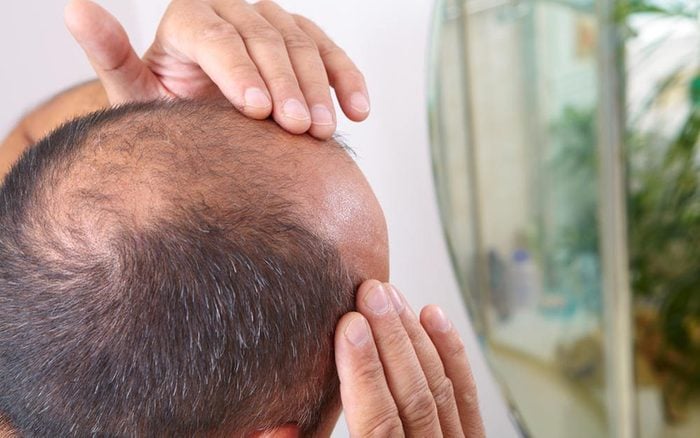This New, Cutting-Edge Treatment Could Be the End of Baldness
Updated: Mar. 01, 2021

When hair goes, there's usually no getting it back. In a boon to receding hairlines everywhere, science has discovered a way to "wake up" hair follicles.
Whether or not there’s a scientific benefit to being bald—we’ll let the follically challenged among us be the judge of that—scientists continue to search for a balding cure. According to UCLA researchers, that isn’t completely out of the question. A team, led by Heather Christofk, PhD, and William Lowry, PhD, found a new way to activate the stem cells in the hair follicle to make hair grow. Their findings, published in the journal Nature Cell Biology, may lead to new drugs to promote hair growth or work as a cure for baldness or alopecia, a hair loss condition linked to factors like hormonal imbalance, stress, aging or chemotherapy.
Working at the Eli and Edythe Broad Center of Regenerative Medicine and Stem Cell Research at UCLA, the researchers discovered that the metabolism of the stem cells embedded in hair follicles is different from the metabolism of other cells of the skin. When they altered that metabolic pathway in mice, they discovered they could either stop hair growth, or make hair grow rapidly. They did this by first blocking, then increasing, the production of a metabolite—lactate—genetically.
The study authors say that once they found that altering lactate production in the mice influenced hair growth, they were able to look for potential drugs that could be applied to the skin and have the same effect.
Two drugs in particular—known by the generic designations of RCGD423 and UK5099—influenced hair follicle stem cells in distinct ways to promote lactate production. The use of both drugs to promote hair growth are covered by provisional patent applications. However, they are experimental drugs and have been used in preclinical tests only. They won’t be ready for prime time until they’ve been tested in humans and approved by the Food and Drug Administration as safe and effective. (While you’re waiting for a male pattern baldness cure, check out how to prevent hair loss in men.)
So while it may be some time before these drugs are available—if ever—to treat baldness or alopecia, researchers are optimistic about the future. “Through this study, we gained a lot of interesting insight into new ways to activate stem cells,” says Aimee Flores, a predoctoral trainee in Lowry’s lab and first author of the study. “The idea of using drugs to stimulate hair growth through hair follicle stem cells is very promising given how many millions of people, both men and women, deal with hair loss. I think we’ve only just begun to understand the critical role metabolism plays in hair growth and stem cells in general; I’m looking forward to the potential application of these new findings for hair loss and beyond.”
Next, read about this 7-year-old girl living with alopecia will inspire you.